Best Native Plants for Novi, Michigan
BY STUART KUSHNER | APRIL 12TH, 2023 | LAWN CARE, MICHIGAN, NOVIA nice lawn is visually pleasing, but great landscaping that features attractive plants, trees and shrubs really takes your yard to the next level. And the best way to ensure they thrive in a climate as diverse as Novi’s is to use native plants that are adapted to the region.
There are several key benefits to using native plants:
- They support birds, butterflies, and other pollinators, increase biodiversity and lead to a healthier ecosystem.
- Native plants adapt better to local soil conditions, meaning they don’t need as much water, fertilizer, or pesticides.
- They are less likely to become invasive species when planted in the right place.
Interested? Here are some of the best native plants for your Novi, Michigan garden.
In this article:
- Best Native Plants for Your Novi Yard
- How to Choose the Best Novi Natives for Your Landscape
- The Final Word
Best Native Plants for Your Novi Yard
New England Aster (symphyotrichum novae-angliae)
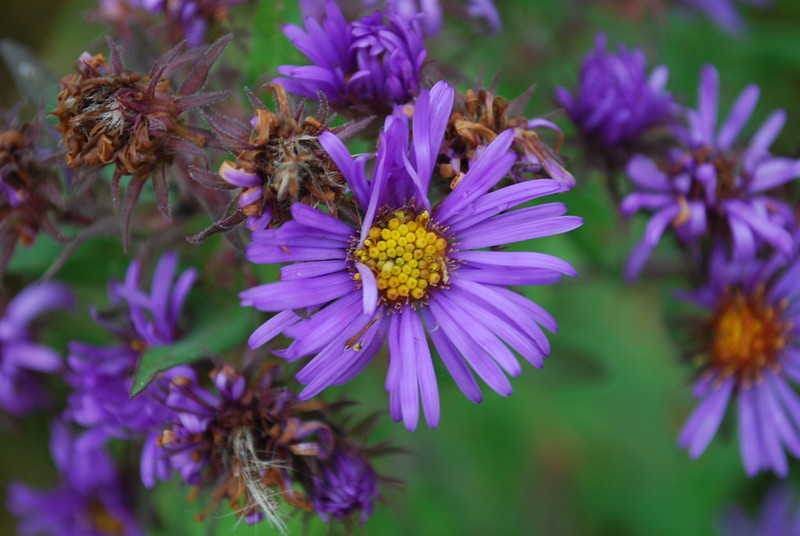
New England asters grow large, purple (or pink-purple) flowers with yellow centers, making them ideal for when you want your garden to have a splash of color. They bloom in late summer to early fall, and their flowers attract butterflies.
This plant grows easily from seed and is moderately deer-resistant. Pinching back the stems several times helps control the height of New England asters and promotes bushiness. This eliminates the need to stake them.
Mature size: 3 to 6 feet tall and 2 to 3 feet wide
Duration: Perennial
Foliage: Deciduous
Sunlight needs: Full sun
Soil preferences: Moist, rich, well-draining
Water needs: Medium
Nodding Wild Onion (Allium cernuum)
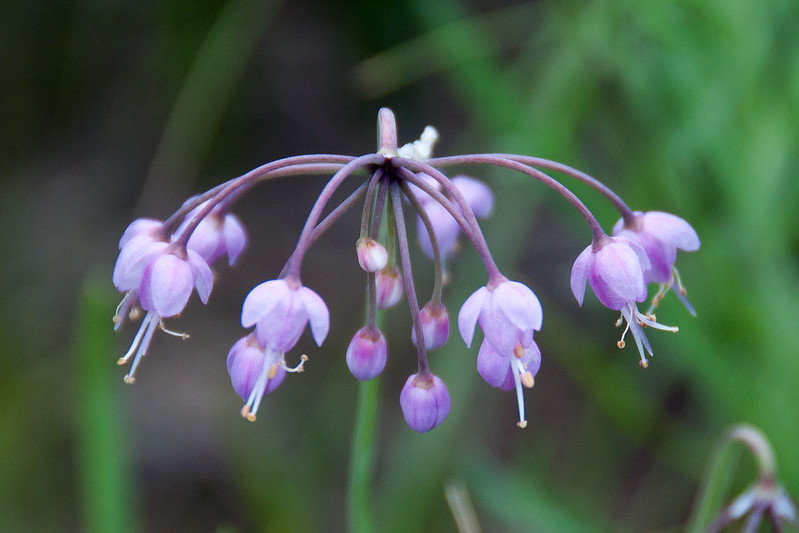
The nodding wild onion isn’t a plant you can use for cooking. Instead, it’s a bulb that grows 1-2 feet tall with long grass-like foliage. Pink flowers grow from clusters between June and August, attracting pollinators. The easiest way to propagate them is to divide the bulb offsets (which allows the plant to spread).
Nodding wild onion grows in well-drained soils in full sun to light shade. You can recognize it by its scrapes hooking downward below the flower to make it seem like it’s nodding (hence the name).
Growth habit: Erect, arching
Mature size: Six inches to 2 feet tall and 4 inches to 1 foot wide
Duration: Perennial, bulb
Foliage: Deciduous
Soil preferences: Average, dry to medium, well-drained
Water Needs: Dry to medium
Sunlight: Full sun to partial shade
Butterfly Weed (Ascelpias tuberosa)
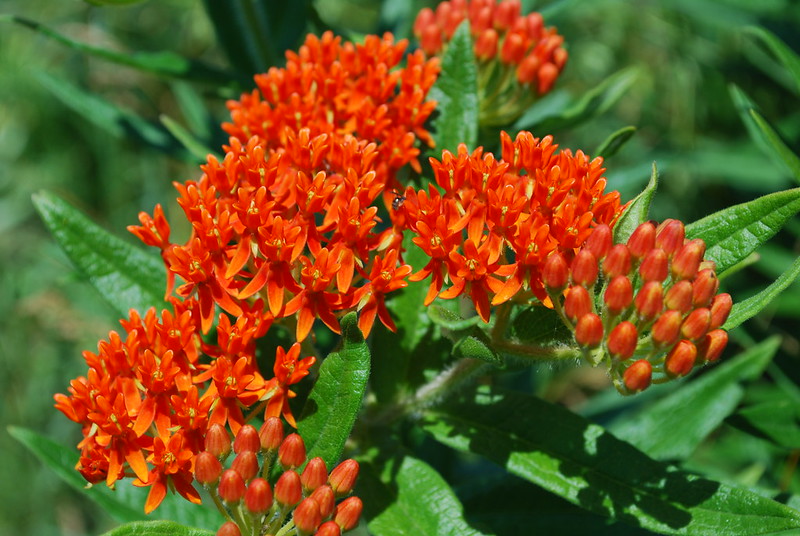
Butterfly weeds are colorful and, as the name implies, attract butterflies like a moth to a flame. It’s a durable plant that tolerates deer, drought, and dry soil. It blooms from May to August and displays from August to September.
However, it may be toxic, so don’t eat it. Nevertheless, if your garden needs a splash of color, butterfly weed is a great choice.
Growth habit: Erect
Mature size: 1 to 2 feet tall and 1 to 1.5 feet wide
Duration: Perennial
Foliage: Deciduous
Sunlight needs: Full sun to partial shade
Soil preferences: Average, dry to medium, well-drained soil
Water needs: Dry to medium
Potential hazards: Low toxicity
Swamp Milkweed (ascelpias incarnata)
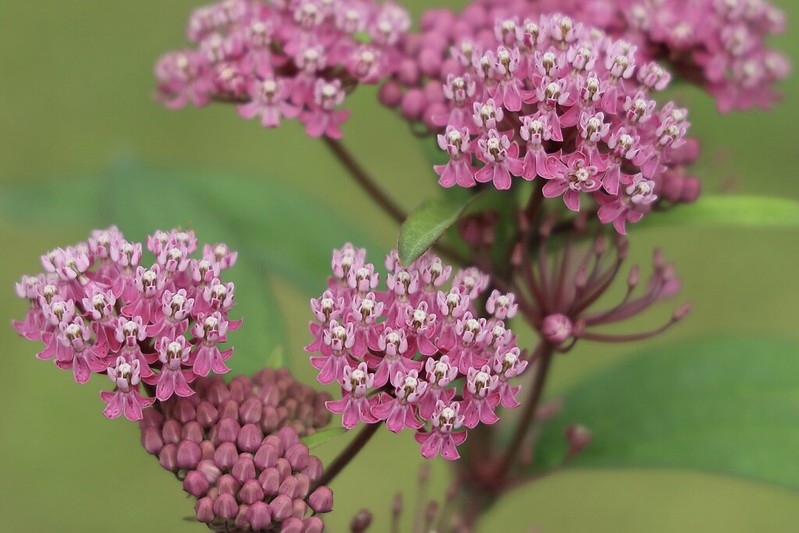
Swamps might evoke images of vines, decay, and stagnant water, but you wouldn’t know it from looking at this beautiful plant that grows there. Swamp milkweeds have small pink to mauve (or uncommonly white) flowers growing in clusters at the stem ends.
Swamp milkweeds grow in medium to wet soils but surprisingly tolerate average well-drained soils. Butterflies are attracted to them for their nectar.
Growth habit: Clumping, erect
Mature size: 3 to 4 feet tall and 2 to 3 feet wide
Duration: Perennial
Foliage: Deciduous
Sunlight needs: Full sun
Soil preferences: Average, well-drained, medium to wet
Water needs: Medium to high
Potential hazards: Low toxicity
Blackhaw Virburnum (viburnum prunifolium)
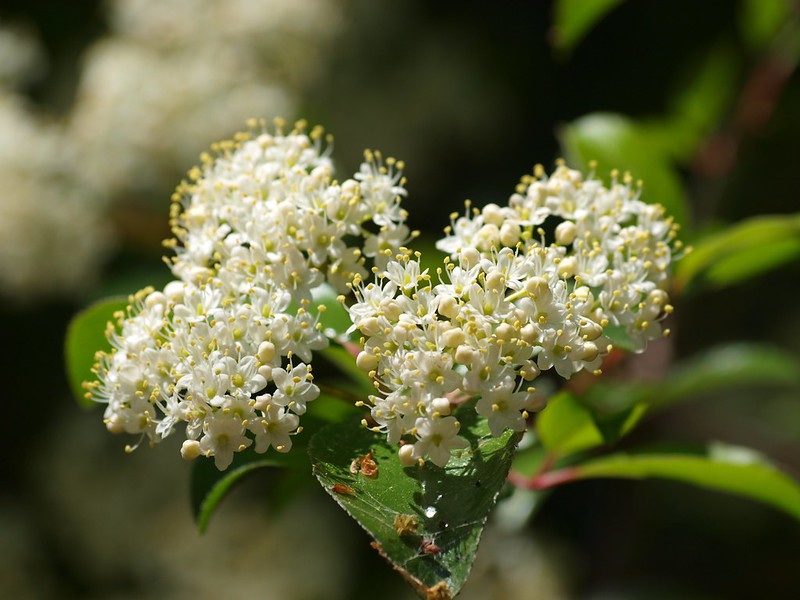
This shrub or small tree is a high-value plant for wildlife. White flowers bloom in spring, and showy red flowers bloom in fall. Its berries mature to purple-black and are edible to both humans and birds. You can use its berries in jams and preserves.
Blackhaw thrives in full sun to partial shade and can tolerate drought. It has no serious insect or disease problems and even does well in air pollution.
Growth habit: Erect, irregular, multi-stemmed, rounded
Mature size: 12 to 20 feet tall and 6 to15 feet wide
Duration: Perennial
Foliage: Deciduous
Sunlight needs: Full sun, part shade
Soil preferences: Average, well-drained, dry to medium
Water needs: Dry to medium
Black-eyed Susan (rudbeckia hirta)
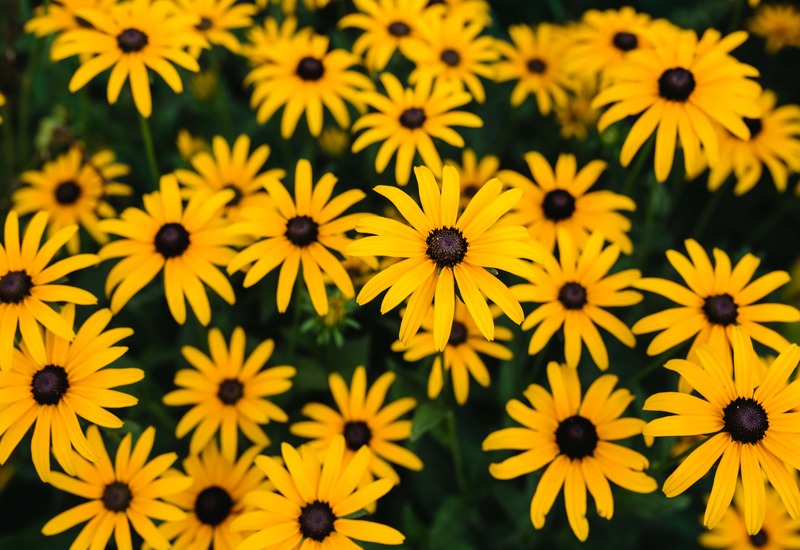
Suppose you want to add a bit of sunshine to your garden. Consider planting black-eyed Susans. Their large yellow flowers attract butterflies, songbirds, and other pollinators.
Black-eyed Susans tolerate heat, drought, and most soils (the exception being poorly-drained wet ones). They freely self-seed and usually remain in the garden during that time.
Growth habit: Erect
Mature size: 2 to 3 feet tall and 1 to 2 feet wide
Duration: Perennial, biennial
Foliage: Deciduous
Sunlight needs: Full sun to partial shade
Soil preferences: Average, medium moisture, well-drained
Water needs: Medium
Flowering Dogwood (cornus florida)
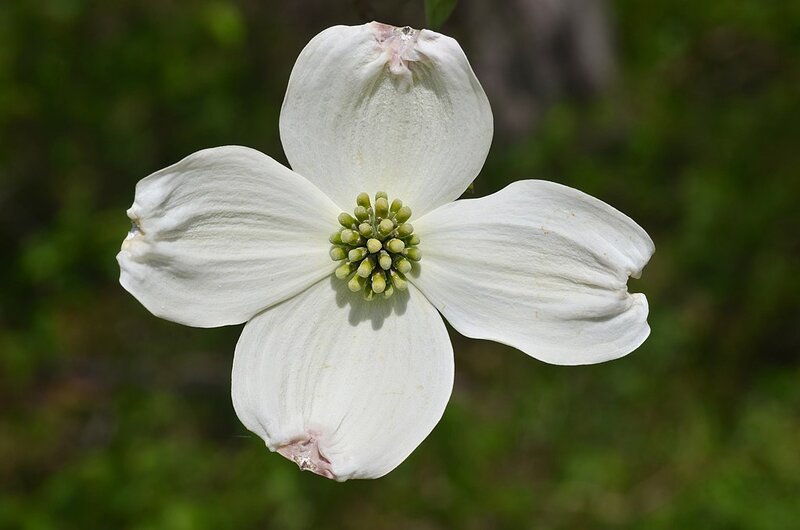
Photo Credit: Derek Ramsey / Wikimedia Commons / CC BY-SA 4.0
Flowering dogwood is quite beautiful: a gorgeous spring bloom, bright red berries (which birds and mammals can eat, but not humans), an alligator-esque bark, and leaves that turn a brilliant red in the fall. It prefers two to four inches of mulch, which keeps its roots cool and moist in the summer. It also prefers moist, organically rich, acidic soils.
However, the flowering dogwood is especially vulnerable to diseases, particularly anthracnose, so planting it where anthracnose infestations are present isn’t recommended.
Growth habit: Ascending, pyramidal, rounded, spreading
Mature size: 15 to 30 feet tall, and 15 to 30 feet wide
Duration: Perennial
Foliage: Good Fall
Sunlight needs: Full sun to part shade
Soil preferences: Moist, organically rich, acidic soils
Water needs: Medium
How to Choose the Best Novi Natives for Your Landscape
When choosing native species for your landscape, consider the amount of available sunlight, the type of soil (and how well it drains), as well as whether you have standing water.
Understanding your location’s hardiness zone also helps determine what to plant. Novi’s hardiness zone is 6a, meaning its coldest annual temperature ranges from -10 to -5 degrees Fahrenheit. Your plants should be able to handle extreme cold.
The Final Word
You can usually find native plants in garden centers, so check with them. Additionally, understand where these plants come from before buying them. If they come from the wild, they can devastate the local plant populations. (Propagated plants are also healthier than wild ones.)
Once you’ve picked and planted your natives, your next step is the lawn. To ensure the healthiest lawn possible, pick from one of our best grass types for Novi. Then, contact one of WikiLawn’s lawn and landscaping pros, and we’ll do the dirty work for you.
Main Photo by: Pxfuel